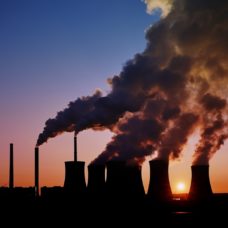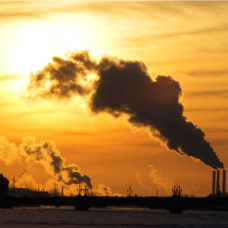According to a recent study, carbon capture and storage (CCS) may be the key to mitigating climate change.
Several carbon capture and storage technologies already exist.
Last year, a swiss company, Climeworks, started using carbon capture technology to transform CO2 into commercially viable products. Recently, a team of Swedish scientists created a new sustainable and cost-effective carbon-capturing material with a high capture rate.
So, it’s not surprising that carbon capture and storage (CCS) is a viable option for fighting climate change.
According to the United Nation‘s Intergovernmental Panel on Climate Change (IPCC), CCS must achieve 13 percent of the world’s necessary emission reductions by 2050. In other words, we must collect and store 5 to 7 gigatons of carbon dioxide before the next 30 years.
Some policymakers and climate experts are still uncertain that CCS can meet its portion of the goal. However, a new study published in Nature Scientific Reports suggests that CCS could, in fact, achieve its target.
In a statement, co-author of the study, and researcher at the University of Texas‘s Bureau of Economic Geology, Tip Meckel said:
“With this paper, we provide an actionable, detailed pathway for CCS to meet the goals. This is a massive hammer that we can deploy right now to put a dent in our emissions profile.”
So, how did the researchers reach this conclusion?
How Carbon Capture and Storage Could Mitigate Climate Change
For the study, the team considered a method of CCS that involves storing the greenhouse gas over a mile beneath the surface, within tiny spaces in rocks.
The researchers looked at the amount of geological space available in formations that are suitable for holding CO2. They also explored the number of wells needed to achieve IPCC’s 2050 goal.
In the end, Meckel and his colleagues concluded that there’s space in the world’s nearshore continental margins that are enough to meet the goal. Also, the study points out that we may need to install as much as 14,000 injection wells to attain this goal in the next 30 years.
Yes, that’s a lot of wells. However, as the researchers pointed out, oil and gas have speedily built similar infrastructure – oil wells – in the past.
Computer models from the IPCC and the International Energy Agency show that we can reduce CO2 emissions in various ways. These include investing in renewable and increasing energy efficiency.
Another strategy is to decarbonize energy production and consumption through technologies like carbon capture and storage.
“We’ve shown that the geology and the speed of the development could meet the goal,” said Meckel. “This is a very pragmatic way of going after this.”



















Comments (0)
Least Recent